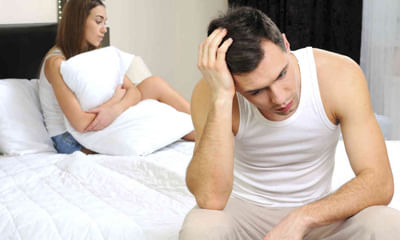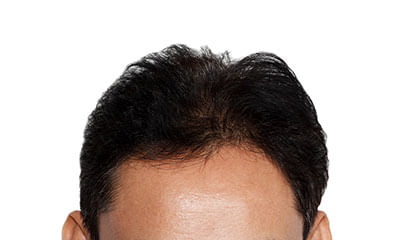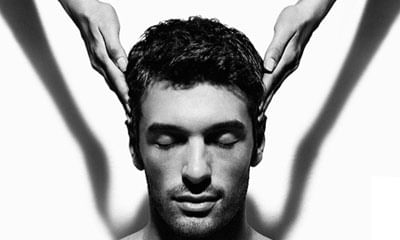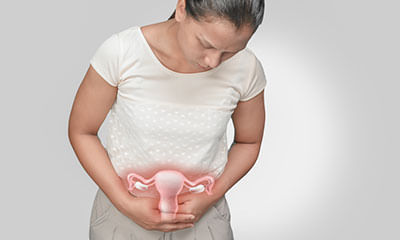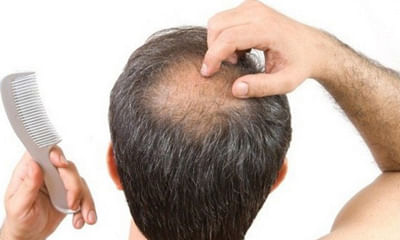No Armpit Hair Growth
I have a problem of nightfall how can I cure this problem by homemade things, and also want to know why this happens. ...
Ask Free Question
After getting maturity many change occurs like hair growth in armpit and on pubic region and moustache appears. And you get excitement due to secretion of certain hormones. Genitals get active. When you get excitement during sleep ejaculation happens as nightfall. This is normal process and sign of maturity.
Hi, I am getting bumps at several places like backside of the neck, armpits and in between the chest. I thought this was ...
Ask Free Question
Don't cut your scalp hair or body hair too short. Take bath with a benzoyl peroxide soap. You can start vitamin A and D supplements for one month.
I am now 18 years but I have no beard moustache and armpit hair yet so what I have to do. ...
Ask Free Question
Hello lybrate-user. Moustache and armpit hair are secondary sexual characters that develop at the onset of puberty. Non development of these along with absence of growth spurt, lack of testicular growth and absence of deepening of voice is termed delayed puberty. It's important to know for doctors about your other secondary sexual characters like your present height. Most common cause of delayed puberty is constitutional delay wherein there will be a similar family history, but this condition is harmless. Puberty is just delayed and all the secondary sexual characters appear late but the final height and other secondary sexual characters achieved will be normal. I suggest you revert back with your present height, family history and if you have got any other medical problems. Best would be to consult a certified endocrinologist near to you.
I am suffering from pcos but taking treatment means I am loosing my weight I lost 1.5 kg I didn't had follicle growth la ...
Ask Free Question
Women with PCOS have these characteristics: • High levels of male hormones, also called androgens • An irregular or no menstrual cycle • May or may not have many small cysts in their ovaries. Cysts are fluid filled sacs. PCOS is the most common hormonal reproductive problem in women of childbearing age. How many women have PCOS? An estimated 5 to 10% of women of childbearing age have PCOS. About PCOS Women with PCOS develop several cysts inside 1 or both ovaries. Generally, 15 to 20 follicles begin to mature for ovulation every month. Usually 1 follicle fully matures, and the rest die off. Women with PCOS however never have 1 follicle fully mature. As a result, 15 to 20 follicles stay inside the ovaries and become cysts. These cysts produce high levels of male hormones causing a number of unpleasant symptoms. What causes PCOS? No one exactly knows the cause of PCOS. Evidence suggests there is a genetic link to this disorder. Certain factors appear to play a role in this syndrome. They include: •Low FSH – FSH (Follicle Stimulating Hormone) is a hormone released by the pituitary gland in your brain. It helps the follicles inside your ovaries to mature enabling ovulation. •Excess male hormones – most women with PCOS have high levels of male hormone. This interferes with ovulation and contributes to PCOS •Insulin resistance – many PCOS are insulin resistant. Insulin resistance occurs when your body does not manage insulin properly. Insulin is important for proper ovarian function. Hence insulin resistance can contribute to PCOS. What are the symptoms of PCOS? • Infrequent menstrual periods, no menstrual periods and or irregular bleeding • Infertility or inability to get pregnant because of not ovulating • Increased growth of hair on the face, chest, stomach, back, thumb or toes • Acne, oily skin or dandruff • Weight gain or obesity, usually extra weight around the waist • Male pattern baldness or thinning hair • Skin tags, or tiny excess flaps of skin in the armpits or neck area. What are the complications of PCOS? • Infertility – because PCOS interferes with ovulation you can have long term fertility problems • Endometrial cancer – PCOS can cause the inner lining of your womb to become thicker, increasing your risk of developing endometrial cancer • Obesity related illness – because PCOS increases your chance of being overweight, it causes weight related health illness such as high blood pressure, diabetes and heart disease. Getting the symptoms under control at an earlier age may help to reduce this risk. What tests are used to diagnose PCOS? Diagnosis is based on a physical examination and a few clinical tests. Your Gynaecologist will provide a pelvic examination to look for swelling of your ovaries, check your hormone levels and possibly arrange an ultrasound in order to get a detailed picture of your ovaries and the endometrium (inner lining of your womb). What is the difference between PCO and PCOS? The term polycystic ovaries (PCO) describes the appearance of the ovaries seen on ultrasound, but do not have symptoms or hormone findings as described previously. Approximately 20% of women in the general population have ovaries with this appearance. What is not known from the current evidence is whether these women will develop a full blown PCOS in the future. How is Polycystic ovarian syndrome treated? Because there is no cure for PCOS, it needs to be managed to prevent problems. Treatments are based on the symptoms each patient is having and whether she wants to conceive or needs contraception. Common PCOS treatment options include: Weight loss - weight loss will help to regulate insulin levels and help to restore ovulation and menstrual cycles. Birth control pills - pills that contain oestrogen and progesterone will help to regulate the menstrual cycles and decrease the appearance of hair growth and acne. The menstrual cycle will become abnormal again when the pill is stopped. Women may also think of taking a progesterone only pill. This will help to prevent endometrial problems, but not help to reduce acne and hair problems. Diabetes medication - the diabetes medication, metformin, affects the way insulin is processed in the body. It also helps to decrease the testosterone level (male hormone level). This may help to restore ovulation and lessen hair growth. Fertility medications - fertility medication, injections of Gonadotropins (hormone injections) may help to stimulate ovulation and increase your chances of getting pregnant. Medicine for increased hair growth and extra male hormones - if a woman is not trying to get pregnant, medical treatments such as Cyproterone acetate, Spironolactone, Finasteride etc have been shown to reduce male hormone effects on hair growth. All treatments must be continued for 8 to18 months before a response is expected. This is due to the slow rate of hair growth. Other non-medical treatments such as electrolysis or laser hair removal are effective at getting rid of hair. Surgery - ovarian drilling is often an effective procedure that helps to stimulate ovulation. During surgery small holes are made in the ovary which helps to reduce the testosterone level (male hormone level) and an increase in ovulation. Does PCOS change at menopause? Researchers are looking at how male hormone levels change as women with PCOS grow older. They think that as women reach menopause, ovarian function changes and menstrual cycle may become more normal. But, even with falling male hormone levels, excessive hair growth continues, and male pattern baldness or thinning hair gets worse after menopause.
I'm 17 year old, but still don't have facial hair, but have pubic and armpit hair, is there a problem with this. ...
Ask Free Question
No it is not problem.. and better not to worry about facial hair... whether they come or not.. it is not a disease...
Is there any problem in growing a lot of hair in armpits. I haven't shaved my armpits since the hair started growing the ...
Ask Free Question
Hi! Growing too many hair in the arm pits will increase the sweat retention and chances of bacterial infections. If you are unwilling to shave them you can trim them and use a syndet soap to bath and use antibacterial and antifungal sweat absorbing powder.
Im 20 years old I did not get still beard on my face so I should get beard with in 1 year can you please guide me. ...
Ask Free Question
Dear patient, having less or no hair & beard singnifies that there is a disturbance in your endocrine system, specially in your growth hormones level. The level of testosterone promotes the growth of hair on face, in armpits, around genitals, chest and beard.In your condition, there is reduced level of testosterone which has resulted in hair loss from beard and other body parts. Here I suggest you to start hormone therapy and some Yoga ,meditation etc becaue all we know that better hormones are secreted from brain tissue itself. So just go for it.
What is DHT? How it is formed in our body? How it leads to hair fall and baldness? Is it possible to prevent its formati ...
Ask Free Question
Hi lybrate-user, DHT does effect hair growth. But there is no way to stop them its production. However,there are medication which can control and alter its production and help you with hair loss. Male pattern baldness, also known as androgenetic alopecia, is the most common type of baldness in men. Hair at the temples and on the crown will slowly thin and eventually disappear. There is a genetic component to male pattern baldness, and DHT is thought to be one of the major factors involved in its etiology. Hair growth is split into three phases: anagen, catagen and telogen: ï§Anagen: the growth phase. Hairs remain in this phase for 2-6 years. The longer this phase lasts, the longer the hair grows. Normally around 85% of the hairs on the head are in this phase ï§Catagen: this phase lasts only 2 weeks and allows the follicle to renew itself ï§Telogen: this is the resting phase where the follicle lies dormant and can last from 1-4 months. Normally 10-15% of hairs are in this phase. Once this phase is over and anagen begins again, the existing hair is pushed out of the pore by the new growth and naturally sheds. In MPB, follicles slowly become miniaturized and the anagen phase of the hairs is reduced. Due to the shortened growing phase, the hair's maximum length is reduced. At the same time, the telogen phase lengthens. This cycle slowly becomes more and more weighted toward the telogen phase. Over time, the anagen phase becomes so short that the new hairs do not even peek through the surface of the skin. Added to this, telogen hair growth is less well anchored to the scalp, explaining why there is often hair loss noted during showering. Miniaturization of the follicles causes the shaft of the hair to become thinner and thinner with each cycle of growth. Eventually, normal (terminal) hairs are reduced to villus hairs. Villus hairs are the soft, light hairs that cover a baby and mostly disappear during puberty in response to androgens. Hair on the head continually grows without the presence of DHT. However, hair in the armpit, pubic hair and beard hair cannot grow without the presence of androgens. Interestingly, individuals who have been castrated or have 5-AR deficiency will never suffer from male pattern baldness but will also have very little hair elsewhere on the body. DHT is entirely necessary for most hair growth but is detrimental to head hair growth. DHT is thought to attach to androgen receptors on hair follicles and, through an unknown mechanism, genetically trigger the receptors to begin miniaturizing.
I am 19. My voice is heavy and rough .what should I do. I think its a reason of drinking milk daily from years. Help me ...
Ask Free Question
The third stage of male puberty occurs around age 13 or 14, but frequently as early as 11 or late as 16. Pubic hair begins to grow darker and fuller, and the penis now begins to grow in length. The testicles continue growing, erections become commonplace and the boy gains in height at a rate of over 3 inches (7.6 centimeters) a year. The voice may begin "breaking" or "cracking." This is when the boy's voice suddenly and uncontrollably changes pitch mid-word or sentence, due to the growth of the larynx and the lengthening of the vocal cords. Stage four of male puberty commonly takes place when a boy is around 14 or 15 years old. Hair begins showing up in the armpits and on the face, and pubic hair begins to grow coarse. The boy's voice will even out and become deeper. The stage-four boy can use this deeper voice to yell forcefully at the mirror when he sees his new acne, due to his ever-more-oily skin. He begins to grow taller and even faster, at about 4 inches (10.2 centimeters) a year. The penis now grows thicker and continues to lengthen.
Hi! I am 19+ years old type 1 diabetic male. I got physically matured at age of 13 only. Growth plates were fused, facia ...
Ask Free Question
I think you might be developing a goitre. Kindly do a sonography of the neck to confirm it or rule out any other condition.

